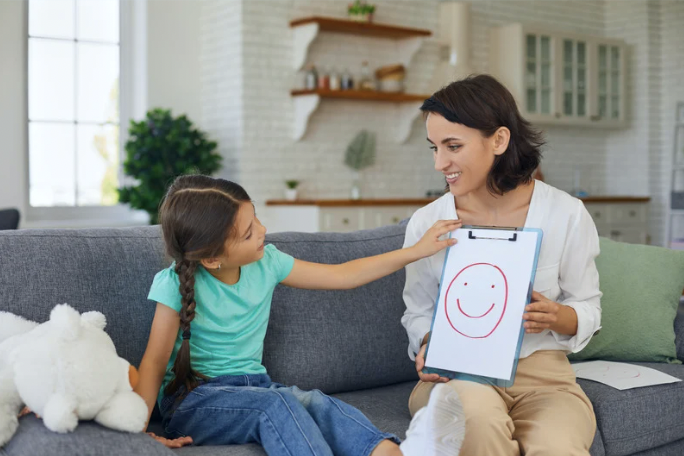Some Autistic individuals (and many other Neurodivergent individuals) communicate differently from Neurotypical individuals. Under the medical model of disability, this type of communication is thought of as disordered and something that requires direct intervention to change. We know now, however, that yes, Autistic individuals may communicate differently, but that does mean that it’s less effective or wrong.
The Double Empathy Problem tells us that people coming from different experiences struggle to empathize with and understand each other, despite being equally effective communicators. Recent research and shifts in thinking due to the neurodiversity movement have contributed to this change. Research shows that autistic people are incredibly effective communicators with other autistic people and that just because a way of communicating is different does not automatically mean that it is disordered or ineffective. People of all neurotypes can benefit from using perspective taking skills to learn how to bridge communication challenges and breakdowns. It should not just be on the autistic person to alter the way that they communicate. Neurotypical people have to work at this, too.

Some of the most common communication differences:
Neurodivergent Style |
Neurotypical Style |
| May not understand indirect language, preferring straight-forward or direct language | Often use indirect language to be casual or funny, interpreting more direct language as rude |
| May not demonstrate “typical” joint attention (JA), such as eye contact, because it is awkward/painful, instead JA may look like changes in facial expression, body movement, or interactions | Joint attention looks like shared gaze, eye contact, pointing to a referenced item |
| May not understand nuances or purpose of “small talk,” preferring to share lots of information about topics they enjoy (“info dumping”) | Stick to “small talk” until they are comfortable with someone |
How can we support our Autistic clients, children, family members, co-workers, and friends?
One of the biggest barriers to communicating with people with different communication styles than our own is being flexible! It has often been thought that autistic individuals lack flexibility, but this puts the onus of change completely on the neurodivergent person. Neurotypicals need to consider their own flexibility. There’s no one single best way to communicate. All communication styles are valid & deserve respect.
Take a moment to observe & reflect on the communication style of the neurodivergent loved ones in your life as well as our own communications style. Support can look like engaging openly in communication, patiently listening to your communication partner & maintaining positive body language. We can ask our communication partners if they prefer direct language or if they’d rather skip the small talk. We shouldn’t force eye contact if that doesn’t feel natural.
It’s also ok to tell your communication partner what works well for you. Just keep it positive & non-critical. For example, if you’re speaking with a ND person who is currently infodumping & you want to contribute to the conversation you might say “I love talking about this with you! Could I ask a question?” or if you need more processing time in a conversational exchange you might say “I communicate best with a slower speech rate. I might need some patience.”
When we follow our communication partners’ lead, we’re on our way to more validating & comfortable communication that works for all communication styles!

0 Comments